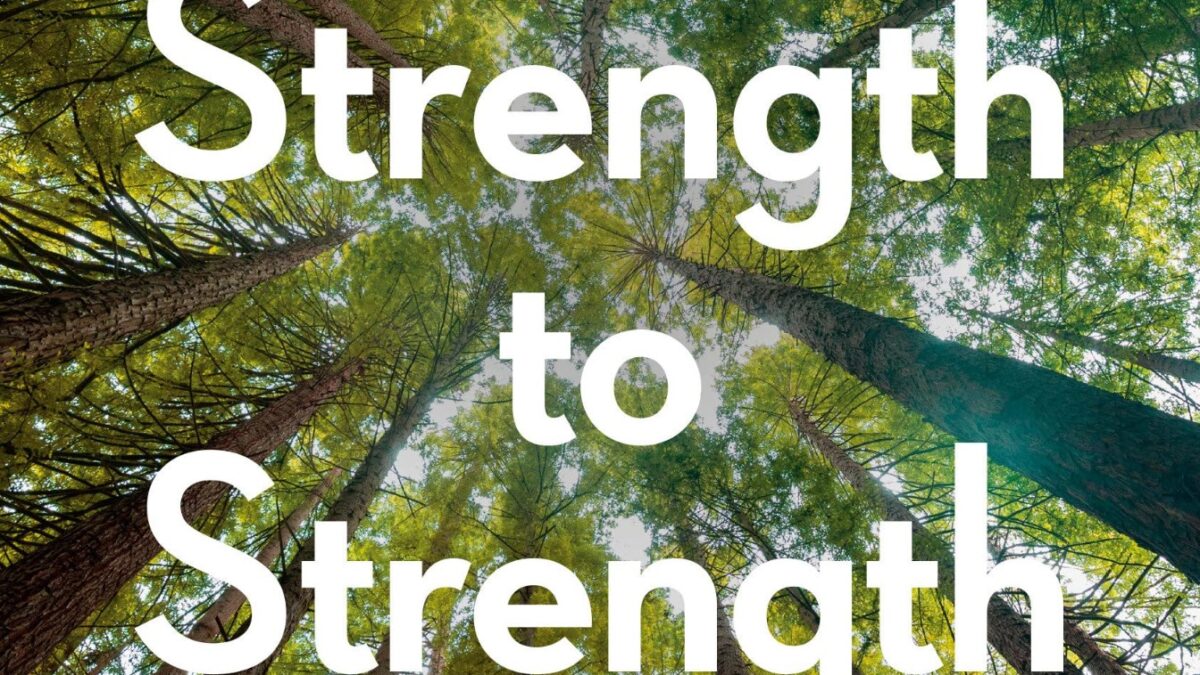If there’s something today that people fear more than an agonizingly painful death, it’s old age. All around, people well past middle age continue to strive and assert themselves in the same way they did when younger. They don’t retreat from the spotlight, but jealously guard it. They stubbornly refuse to recognize that they just aren’t as smart, sexy, and energetic as they used to be and end up humiliating themselves daily.
Part of this impulse is vanity and self-delusion, but another part is a failure to prepare for this phase of life. Even if most people know they need to save money for retirement, few people think to apply this thinking to non-economic concerns. It doesn’t occur to them that their role, community, and reasons for living will fundamentally change as their youth expires and old age becomes a reality.
In his wonderful new book From Strength to Strength: Finding Success, Happiness, and Deep Purpose in the Second Half of Life, Arthur Brooks addresses this dilemma and offers some wisdom on the topic, cutting through the many lies people tell themselves about aging. As the title implies, he explains how it is indeed possible to move from the “strengths” that accompany young adulthood (20s-early 40s) to the ‘strengths’ that accompany older adulthood (late 40s-death).
It would be easy to write a book like this in a preachy style that relies on well-worn cliches and anecdotes, or to fill it with facile arguments and buzzwords that supposedly give the secret to being more productive and innovative. To his great credit, Brooks avoids these pitfalls of the typical self-help sermon or corporate pep talk. Rather, his book is realistic and well-sourced yet thoughtful and wise. It is an argument that comes from the heart, and one that all audiences, young or old, can appreciate.
Everyone Who Lives Gets Old
Brooks begins his argument with the harsh truth: Everyone will experience decline in the second half of life. Brooks illustrates this with the stories of a fellow passenger he observed on a plane and the scientist Charles Darwin. Both had accomplished great things earlier in their lives, but ended up bitter old men who couldn’t enjoy their twilight years: “[Darwin] had everything to make him ‘happy and contented’ but confessed that his fame and fortune were now like eating straw.”
Far from being outliers, this attitude is common today, and many people will keep hustling and succeeding to avoid this final disappointment. Moreover, decline will hit people much earlier than is usually advertised. Brooks delves into a number of studies and examples to show that most people’s creative faculties and productive energies will slow down sometime in their 40s.
People who fail to prepare for the eventuality tend to work ever harder to maintain the success and esteem they achieved much more easily as young people. They continually hope “that the next success, greater than the last, will bring satisfaction.”
But it won’t. Immediately after thoroughly depressing his reader about their impending decline, Brooks is kind enough to offer an alternative path to fulfillment with his theory of “The Second Curve.” According to him, there are two “success curves” that align with the rise and fall of what British psychologist Raymond Cattell calls an individual’s “fluid intelligence” and “crystalized intelligence.”
In early adulthood, people will rely more on fluid intelligence or “raw smarts” to generate ideas and facts to complete tasks. As soon as they hit middle age, their fluid intelligence will diminish while their accumulated crystallized intelligence or “wisdom” will enable them to use their collection of ideas and experiences to lead and instruct others.
The trick, according to Brooks, is to have the will and maturity to transition from a role that requires fluid intelligence to one that relies on crystalized intelligence. Charles Darwin and many others whose reputations peak in their 20s and 30s often fail to make this transition, leading to futile and sometimes embarrassing attempts to stay relevant.
Shift Your Lifestyle to Fit Your Age
Instead, Brooks recommends following the example of J.S. Bach, who had a successful career as a composer in his first half of life and became a music teacher in his second half. When Bach “fell behind as an innovator, he reinvented himself as an instructor. He died beloved, fulfilled, respected—if not as famous as he once had been—and by all accounts, happy.”
So how does one actually make the leap from the first curve to the second curve? The first step is the “kick your success addiction.” Brooks explains how people in their prime will continually look for the next move upward in their career, seeking money, power, and above all status. In doing this though, they will objectify themselves, and reduce their whole lives to their job. But, as Brooks established earlier, these “hits” of success inevitably come less frequently as one ages.
As with any other addiction, overcoming an addiction to success is difficult: “The prospect of quitting is like looking into an abyss of emptiness—of never feeling really good again.” However, this is an illusion fostered by pride. With a few slices of humble pie, getting off the treadmill of success addiction is possible.
The next step is to cut down on one’s possessions and desires. Drawing on the examples of Buddha and St. Thomas Aquinas, Brooks illustrates how attachments eventually lead to feelings of dissatisfaction and failure. Therefore, one should stop playing the game of collecting more things and experiences, and start simplifying one’s life in every regard—a “reverse bucket list.”
Don’t Be a Death Denier
The spiritually tinged advice continues as Brooks explores the reality of death, the denial of which keeps people from going deeper with their lives: “This fear [of literal and professional death] handcuffs you to your fluid intelligence curve. If you can master it, the reward is incalculable: it can set you free.”
Quite understandably, most people don’t like dwelling on death. Unfortunately, this attitude frequently prevents them from appreciating the present. Therefore, Brooks recommends what used to be considered conventional wisdom: face the fear of death directly and live each day as if it were one’s last.
Once a person is able to cut out the addictions, vices, and fears that drag him down, it becomes necessary to cultivate strong relationships, develop a spiritual life, and come to terms with personal weaknesses. Brooks’s next three chapters focus on these topics, and they are probably the best ones in the book.
Put Relationships First
Although people will spend thousands of dollars and whole decades of time earning degrees and honing their job skills, they will rarely devote even a small fraction of this investment to making friends and building up their personal community. Yet, as Brooks explains, relationships are the most important component of a healthy and happy life.
The discussion of relationships brings him to considering the “epidemic of loneliness” plaguing the modern world. He draws a direct correlation between this epidemic and success addiction, asserting that loneliness “is a special malady for people who have enjoyed a lot of worldly success.”
Not only is the fixation on work and consequent loneliness a problem for people of all ages; it is also a major problem for people retiring. If they don’t form deep bonds with people beyond their spouse and kids—who really shouldn’t serve as best friends anyway—they will cling to their jobs as their only source of community. Hence, Brooks recommends putting time and effort into relationships as if one’s life depends on it—because in the end, it really does depend on it.
In addition to connecting with other people, one should also think about connecting with God. Brooks, a practicing Catholic, does his best Thomas Merton impression as he elegantly fuses the religious wisdom of East and West in his discussion of the spiritual life. Whatever a person’s theology or philosophy might be, it is critical that he or she ponder and practice it. This means questioning one’s beliefs or lack thereof, growing up in those beliefs and leaving childish things behind, and developing a steady habit of meditation and contemplation.
Finally, Brooks advises his readers to come to terms with their weaknesses. This exercise helps with strong relationships and a healthy spiritual life. Admitting one’s weakness helps one connect with others as well as God. Hence, Brooks uses St. Paul as his example of a many who drew a vast number of people to Christ by boasting of his weaknesses. People who embrace their weakness paradoxically become stronger and have a much easier time jumping to the second success curve.
Thus equipped, Brooks makes that final call to action in his last two chapters to “cast into the falling tide” instead of waiting for a painful midlife crisis to strike. When decline sets in and the thrill of striving at one’s job starts diminishing, it is time move on. This may mean approaching one’s work differently, changing jobs, or retiring altogether.
Actually, Everyone’s Not a Workaholic
As wise, pithy, and practical as this book is, it’s still not without faults. Perhaps the main fault is Brooks himself. Simply put, he is not normal, and he is often wrong in assuming his readers are intellectual workaholics who have climbed the same heights that he has. For most, a jump to the second success curve is far more daunting than it was for him.
It therefore rings hollow when he talks about stepping down from his position as the president of the American Enterprise Institute in order to become a professor of happiness at Harvard University and write weekly essays for The Atlantic. How nice! One might wonder how he’d approach middle age if he worked at factory, only to be laid off and left to make a living working at an Amazon fulfillment center. Would he still be gushing over his visits with the Dalia Lama or his walks on the Camino de Santiago?
Fortunately, Brooks’s other examples and self-effacing style make up for this issue. Much of what he writes about is quite universal and applies equally to rich and poor alike. Everyone, even the middle-aged Amazon worker, can confront his addiction to success, kick his attachment to worldly things, and stop having ego-driven lifestyles.
One can do this by reading From Strength to Strength and adopting a simple yet profound seven-word formula that Brooks concludes with: “Use things. Love people. Worship the divine.”









